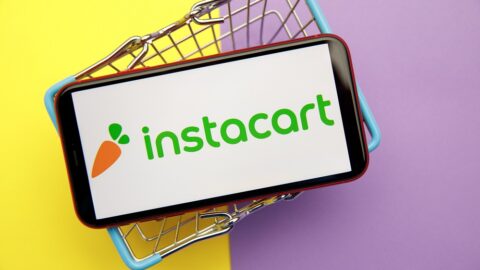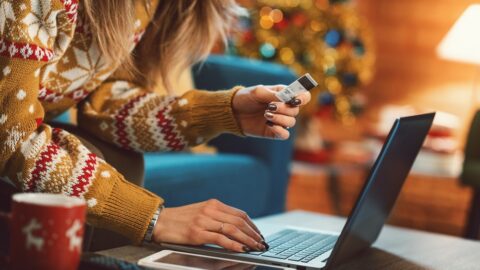Global downloads of mobile shopping apps were up 16% year-over-year in the first half of 2022 while the number of sessions was up 29%, according to data from the It’s Not Luck, It’s Skill: Make Every Marketing Dollar Count This Holiday Season report by data.ai. More consumers than ever are using mobile apps across their entire journey, from finding inspiration to checking out, and understanding how they are viewing the most important touch points will be vital to ecommerce success during the holiday season.
Those touch points aren’t limited to the retailer’s own first-party mobile app: aligning with increasingly popular coupon apps like Honey or Fetch Rewards can bring bargain-hunting shoppers to your site. Retailers also should consider working with buy now, pay later (BNPL) solutions, but only if their customer base already has shown interest in using this payment method.
“I think what we’re seeing happen is that people are on mobile, and they’re showing indications of how that behavior is changing with the burden of inflation hitting their wallets,” said Lexi Sydow, Head of Insights at data.ai in an interview with Retail TouchPoints. “People are more price sensitive, so we expect a bit more investigation for prices. People are very discount sensitive — they always are this time of the year, obviously Black Friday and Cyber Monday are huge for discounts and deals, but I think even more than in previous years people are paying very close attention to where the deals are and making their dollars go a bit further.”
Additionally, people have become very familiar with both the advantages and limitations of mobile browsing since the start of the pandemic, and now many are handling everything from just one device. Retailers need to keep this familiarity in mind when designing their mobile experiences. For example, if an app is missing key features available on the desktop experience, that can disrupt the whole journey and cost conversions.
Mobile Retailing Requires a ‘Mindset Shift’
Retailers looking to maximize the power of their own apps should look to SHEIN for inspiration. The fast fashion company saw the highest year-over-year growth in downloads of any retailer’s app globally, and also drove the most sessions. It was the second-most downloaded shopping app in the U.S., beaten only by Amazon, and “shein” was the most searched-for ecommerce keyword in both the Android and Apple app stores.
Sydow credited SHEIN’s success to its mobile-first approach, “not just in the sense that they launched an app, but that it is essentially their first point of contact for consumers.” Many brick-and-mortar retailers have mobile apps, but they are essentially extensions of their physical or general ecommerce presence. Retailers looking to succeed in the competitive mobile market need to undergo a “mindset shift” so they can create a strategy focused on competing with SHEIN and other mobile-first brands. That’s accomplished by understanding and adapting to how the mobile customer journey differs from other channels.
“The interface of the SHEIN app is very mobile native — you’ve got what is almost like an Instagramification of shopping,” said Sydow. “Instead of just ‘save this to cart,’ you can heart photos and have it be more of an interactive experience. Even the placement and the imagery of the fashion that they’re selling is very influencer style. It looks less like you’re being sold to by a corporation and more like a social experience.”
Retailers with existing brick-and-mortar footprints also can leverage them to offer benefits above and beyond what digital-only brands can provide. Retailers still need to take a mobile-first approach to building their app, but they can greatly enhance its options and convenience by thinking about where omnichannel can be brought in to improve the customer experience.
“Let’s pretend I’m a mobile-first business, but now I have this brick-and-mortar presence,” said Sydow. “How is that an advantage? Well, we know that shipping is still an issue like it was last year. We always see usage of these package tracking apps increase during the holiday season. People buying things want to know where they are and when they can get them, so one value-add in having a brick-and-mortar footprint is how you can let them pick it up today or reserve it here.”
Good Deals Bring Shoppers Using Third-Party Apps Home
Retailers also shouldn’t confine their mobile efforts to just their own first-party apps. They should be aware of how their shoppers are using popular coupon apps, a category where sales downloads grew 31% year-over year. The right partnerships or integrations could be the difference between shoppers choosing you or a competitor.
“Let’s say I want to buy this piece of tech and I’m deciding between Target, Best Buy, Walmart and Amazon,” said Sydow. “Perhaps I am a loyal user of a specific coupon app —so it’d be about how you can funnel me and other users like me back to you. It can be a combination of specific deals that you have in your app — like ‘Visit the Best Buy app and we will give you X off for this period.’ There could be a strategic partnership, where all the Honey or Fetch Rewards users out there get a bigger incentive for using my app. I think that there’s a complex layer in how you’re using these partnerships. They can be really strategic and influence the decision point of where I’m putting my money.”
Partnerships with buy now, pay later (BNPL) apps also can pay off. These apps are among the fastest-growing in terms of downloads (up 81% year-over-year, though still only accounting for about 3% of overall downloads), and the right integrations can give retailers an edge when attracting price-conscious shoppers. However, whether the investment is worth the payoff depends on your target audience.
“I think it’s really important to understand the habits of your user base as well as who they are,” said Sydow. “We’ve seen this most adopted by millennials — also Gen Z, but mostly millennials. If your user base tends to skew older, 45+ for instance, it may not make sense to invest in the tech right now. It might be something you prioritize later down the line. But it’s potentially a key feature, and it’s also interesting to see if you can do any strategic partnerships.”













